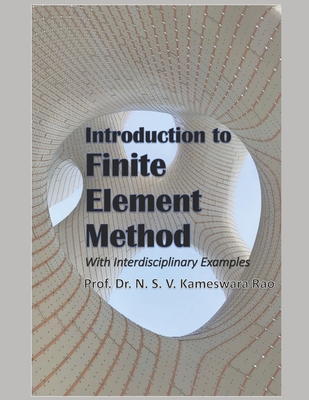
Introduction to Finite Element Method -: With Interdisciplinary Examples
Description
This book is aimed at presenting the theory and practice of Finite Element Method (FEM) in a manner which makes it is easy to learn the concepts, analysis, and methodology of FEM through simple derivations and worked out examples in interdisciplinary areas. While there are many advanced books and manuals on the subject, there are very few books illustrating the method through simple examples and computations. The emphasis is on hands on learning of the FEM through manually worked out examples. The book consists of 6 chapters covering the subject matter with several worked out examples in interdisciplinary areas. FEM has become a powerful tool for solving complex problems in engineering and sciences in the past several decades. This is so since the computational procedures involved are very general and can be formulated in variational and (or) weighted residual forms. The method involves physical discretisation of the domain into finite elements, evaluation of element characteristics and re-assembling the domain represented by the element characteristics and then solving the resulting system response equations. The discretisation of the domain is only physical and mathematical treatment can be as exact as may be required either through improved element characteristics and (or) through refined discretisation (increased and smaller sized elements - (refined mesh). This makes the FEM superior and conceptually different from other numerical methods. The above topics are covered in the book with examples of analysis of simple structures such as rods, trusses, beams and beam columns, frames and elastic solids. Effects of temperature, initial strains, loads and boundary conditions on these structures are also illustrated. Chapters on Applications of the method to Foundation analysis and design, and Flow through porous media along with manually worked out examples are included. The book also presents the background details needed for various applications such as in foundation analysis and design, elasticity, seepage studies etc. The main features of the book are summarised as follows.-Simple and user friendly presentation for easy understanding. -Provides hands on experience with manually worked out examples. -Coverage of several and varied application areas in Civil Engineering, Solid Mechanics, Mechanical Engineering with easy extension to other areas. -Facilitates hands on learning of the subject for undergraduate and graduate students; and offering the course as an e-learning course / online course.-The course material is presented to make it as much self- contained as possible. The emphasis is on explaining logically the physical steps of handling of FEM procedure for a thorough understanding of the applications through manually worked out examples. -The parameters needed as inputs for FEM computations and the background material for various interdisciplinary applications have also been discussed to clarify the ambiguities that may exist in their choice. With the interest in customized solutions using FEM likely to expand in various conventional and non- conventional areas of study, advances in problem solving and interpretation are expected to increase manifold. FEM can be useful for application in almost all areas of practical and theoretical interest. It is earnestly hoped that the present book will be very helpful in advancing the learning and practicing of FEM by all enthusiastic learners and teachers interested in this area.
